Canada, the (often) cold and (parts of it) remote northern neighbour to the US.
We thought we would take a little look at what is available out there, should you find yourself anywhere north of Highway 16 (above N54°).
Why N54°?
Well, because there is not much north of it. Or rather, there is a whole lot of country but not many options north of it. The main cities (and airports) in Canada are primarily in the southern region, close to the US/Canada border.
Here is a picture, because a picture speaks a thousand words. Or in this case, speaks about 10 airports…
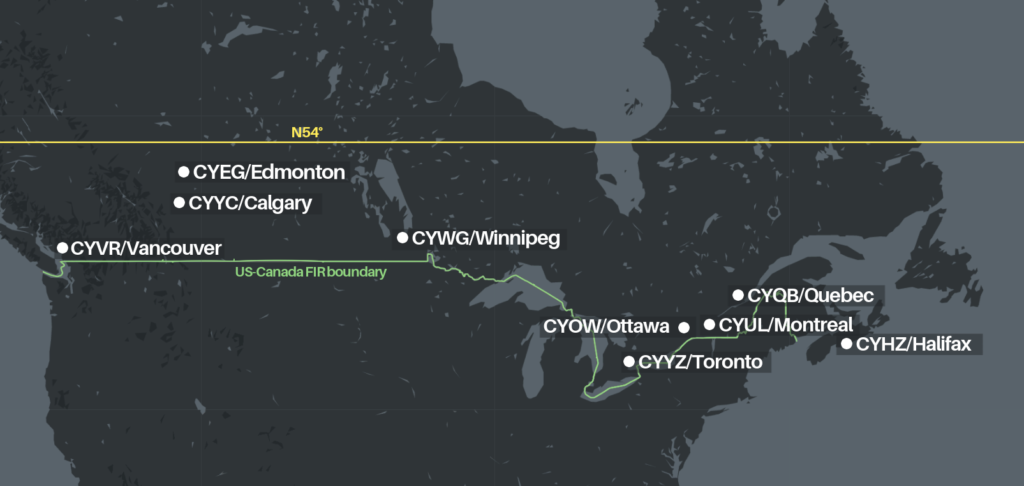
The main Canadian airports are mainly along the southern border.
Canada is big. Very big. And the main airports (big international ones) are generally all situated below N54°. There are others out there though. The most northerly airport which receives scheduled passenger airlines services is CYRB/Resolute Bay sitting right up at N74°.
Unless you are actually operating into somewhere in the outer fringes of Canada then it is unlikely you will be routing over this region. Most polar routes bring you down across central eastern Canada and are unlikely to go so far west for the very reason there are very few airports available there if you need them.
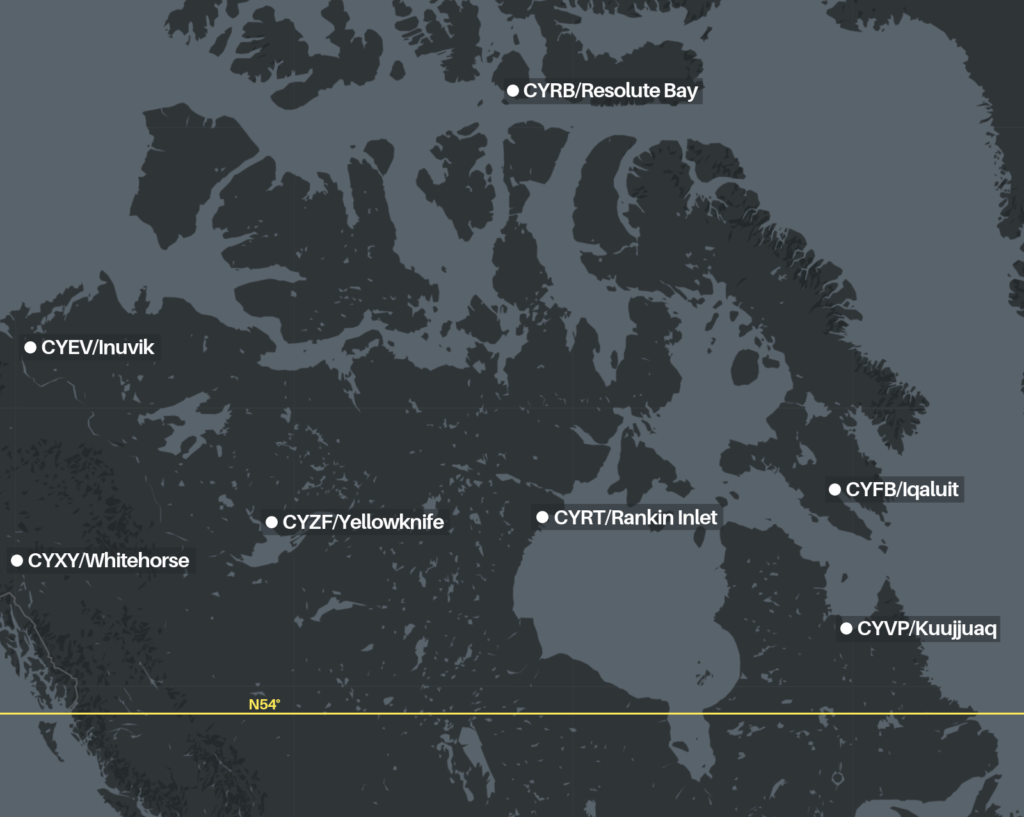
The airports to consider above N54°.
CYRB/Resolute Bay
This has a 6504’ runway 17/35 (that’s orientated to True North, FYI). Watch out though – it’s a gravel runway, so only really useful in a dire emergency!
There is an ILS to runway 35, an RNAV (GNSS) for runway 17, and a warning for severe turbulence during strong easterly winds. Probably something to do with the airport sitting on the edge of a craggy outcrop with lumpy, bumpy terrain to its east. Aside from the (cold) weather warnings, this airport also suffers from WAAS outages.
CYFB/Iqaluit
If you are up as high as this, and around the eastern region, you are probably better checking out CYFB/Iqaluit. This is often used as a planning airport for en-route diversions during polar and northerly North Atlantic crossings.
Runway 16/34 is 8605’ with an ILS to 34 and an RNAV to 16. Land on 16 and you have a few nice runway exits. Land on 34 and you’ll be doing a 180. It is an RFF 5.
There are a lot of ‘CAUTION’ notes on the airport chart here. Caution a steady green laser light, radiosonde balloons, terrain near the airport, large animals, wind that swings all over the place, a nearby blasting area, a random 2.5° ILS slope…
When the wind is from the north you can expect ok weather, if it is from the south the weather is less good, and this is particularly the case in Spring and Fall.
The charts suggest limited winter maintenance, but folk who have operated there say the maintenance is good.
So this is a good airport for emergencies, but has challenges of its own.
The main FBO is Frobisher Bay Touchdown Services who you can reach on +1 867 979 6226 / land@cyfb.ca / 123.350
CYVP/Kuujjuaq
Another eastern option. Runway 07/25 is 6000’ with an ILS to 07 and an RNAV to 25, and a VOR backup. There is a second gravel runway 13/31 which is 5001’.
The challenging environment means there are a few gotchas here too. Runway 07/25 has poor drainage and there is a risk of hydroplaning. It also has large animals in the airport perimeter (not sure if this means moose, bears or polar bears. Probably Caribou though), radiosonde balloons and seaplane activity on a nearby lake.
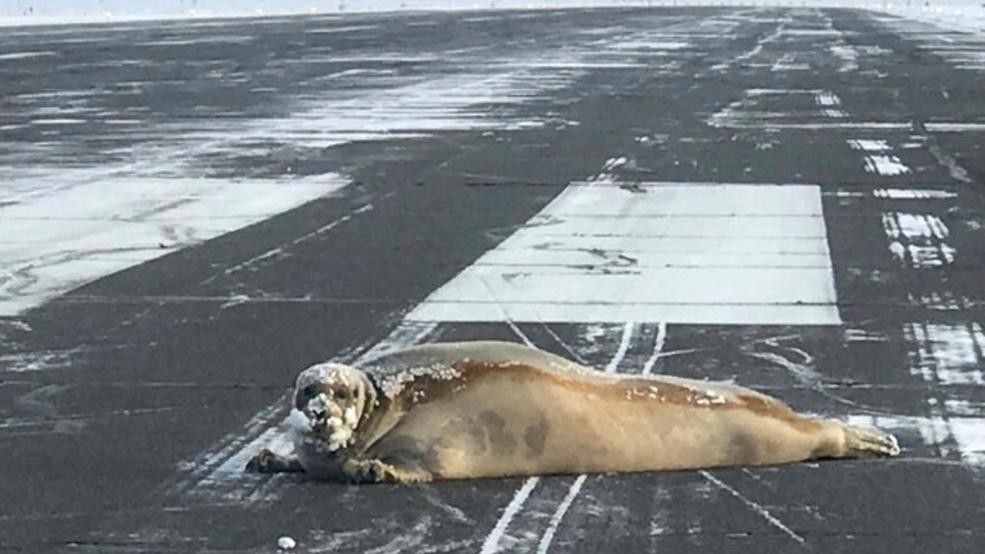
Might have been in Alaska
They say winter maintenance is limited, but this is because they do not operate 24/7. A few hours notice and they can clear the runway, and be available if needed though.
Talk to Halutik Enterprises if you are planning on planning this airport +1 819 964 2978 / cgadbois@makivik.org or try the airport direct on +1 819 964 2968 / 122.2
So CYFB/Iqaluit and CYVP/Kuujjuaq are your only paved runway options to the east.
CYRT/Rankin Inlet
The only paved runway in the central region, this offers a 6000’ runway 13/31. Both approaches are RNAV (GNSS) and orientated to True North.
There isn’t much info on Rankin Inlet, but given the remoteness of the region you can probably assume limited ground support and harsh winter conditions but actually the services are very good and those harsh conditions are limited to the winter! Winds are a bit of an issue here at times – expect some strong, gusty crosswinds.
Check out the picture below…
The only FBO is the airport operator who you can reach on +1 867 645 2773 / +1 867 645 8200. yrtmaintainer@gmail.com might work too.
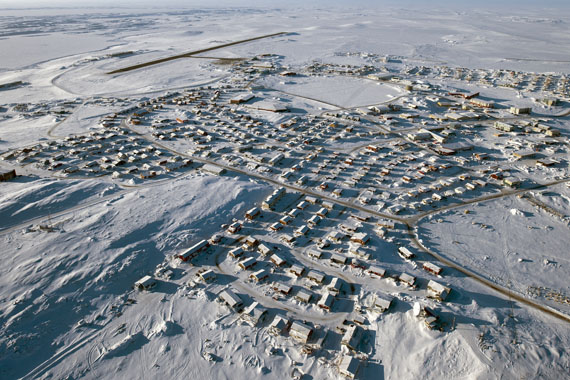
Good luck spotting that runway when it is covered in snow
CYEV/Inuvik Mike Zubko
You have three paved options to the west.
First up, Mike Zubko. Mike, in case you’re wondering at the name, was a local aviator of note. Originally from Poland, he emigrated to Canada, became an Engineer with Canadian Pacific Airlines and went on to set up the Aklavik Flying Service, serving the remote region of the northwest corner of the North West Territories.
Anyway, the airport of his name has a 6001’ runway 06/25 with an ILS for 06 and an RNAV for 24. There are ‘limited graded areas’ outside the runway area here which basically means stay in the runway and you’re good.
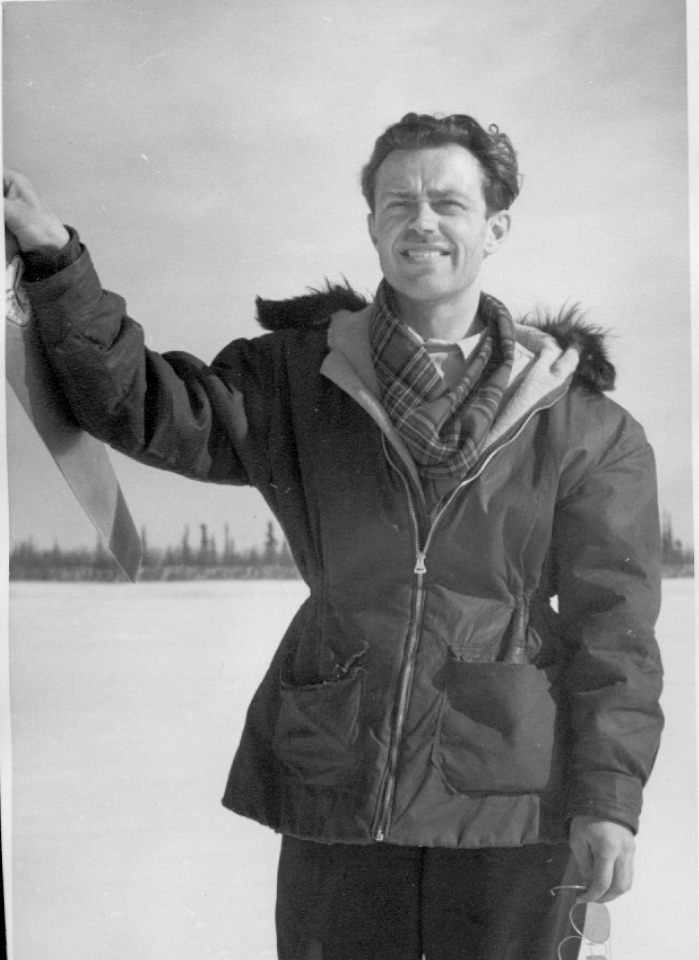
Good ol’ Mike Z
CYZF/Yellowknife
You will find two runways here – 10/28 5001’ with RNAV (RNP) approaches and 16/34 7503’ and offering an ILS to 34, or an RNAV (RNP). It is an RFF6 with 2 vehicles on call.
Yellowknife has limited winter maintenance (because of those operating hours again) and extensive bird activity but is a major hub in the area and will be able to provide ground support for most aircraft.
CYXY/Whitehorse
The biggest of the three, there are three runways here although 14R/32L at 9500’ and 14L/34R at 5317’ are the only two long enough for anything bigger than a short field Canadian Goose landing. 32L has an ILS, 14R has an RNAV. And actually there are no published approaches for 14L/32R let alone 02/20. This is an RFF5.
This airport is right in the middle of some pretty challenging terrain. Loads of it with an MSA rising up to 8500’ in the south. So you can expect some mean winds and a fairly challenging approach, missed approach and departure procedures.
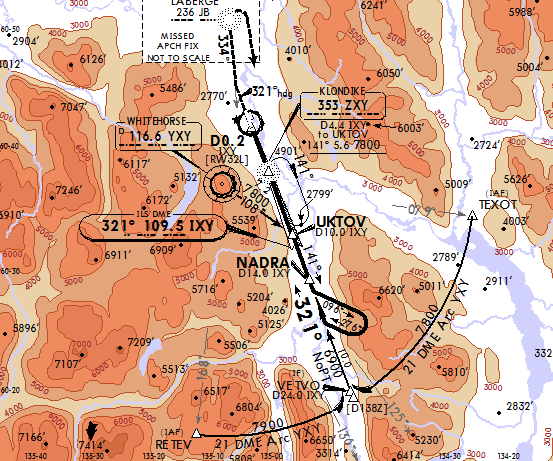
Lots of terrain
And we’ve been told about some others…
CYYQ/Churchill in the shores of Hudson Bay. The airport is not open 24 hours, but does boast a 9195′ runway with an ILS to 33 and an RNAV to 15.
This airport might look relatively small, but it sees high traffic numbers as the area is famed for ecotourism (great polar bear sightings) and it is also a primary transit hub for people and cargo travelling between Manitoba and the more remote regions. It can accept emergency diversions from up to Boeing 777 and 747 aircraft so a good option.
CYMM/Fort McMurray is a nice central international airport in Alberta used as a destination for narrow body aircraft, but a decent alternate for wide body aircraft with its 7503′ runway and ILS approach.
CYPR/Prince Rupert in BC has a 6000′ runway, and RNAV approach. There is limited taxiway and apron space here so a good emergency or diversion airport, but not much other support available and it has “limited winter maintenance”. The airport is on an island and weather observation is not done at the field so caution using this in poor weather.
CYXJ/Fort St. John also known as North Peace Regional is another BC airport option for emergency diversions. It has an unusual crossed runway layout, with 6909′ and 6698′ lengths. Runway 30 has an ILS, otherwise you’re looking at an RNAV. This airport is also slightly higher elevation, sitting at 2280′.
CYXT/Northwest Terrace Regional has Dash-8 sized aircraft operating in. It offers a 7497′ runway with an ILS and a shorter 5371′ runway with RNAV approaches.There is high terrain here (the airport is in a valley) and it is not recommended to use unless familiar with the airport, and even then only during daylight hours.
That’s your lot!
Unless someone knows about one we haven’t heard of? If you have, please share. Email us at news@ops.group. Someone, somewhere, someday might be out in the great Canadian wilderness in need of an airport.
More on the topic:
- More: Canada ADS-B Mandate
- More: 13 things we learned this Winter
- More: The Day After Tomorrow is Now…
- More: Canada: The AGN and what to do with it
- More: Please CAN you PASS the info?
More reading:
- Latest: More face scans at the US border for BizAv flights
- Latest: Greenland NAT Alternates: Dec 2025 Update
- Latest: Mexico Customs Surprises: Pills, Vapes, and Laptop Rules
- Safe Airspace: Risk Database
- Weekly Ops Bulletin: Subscribe
- Membership plans: Why join OPSGROUP?



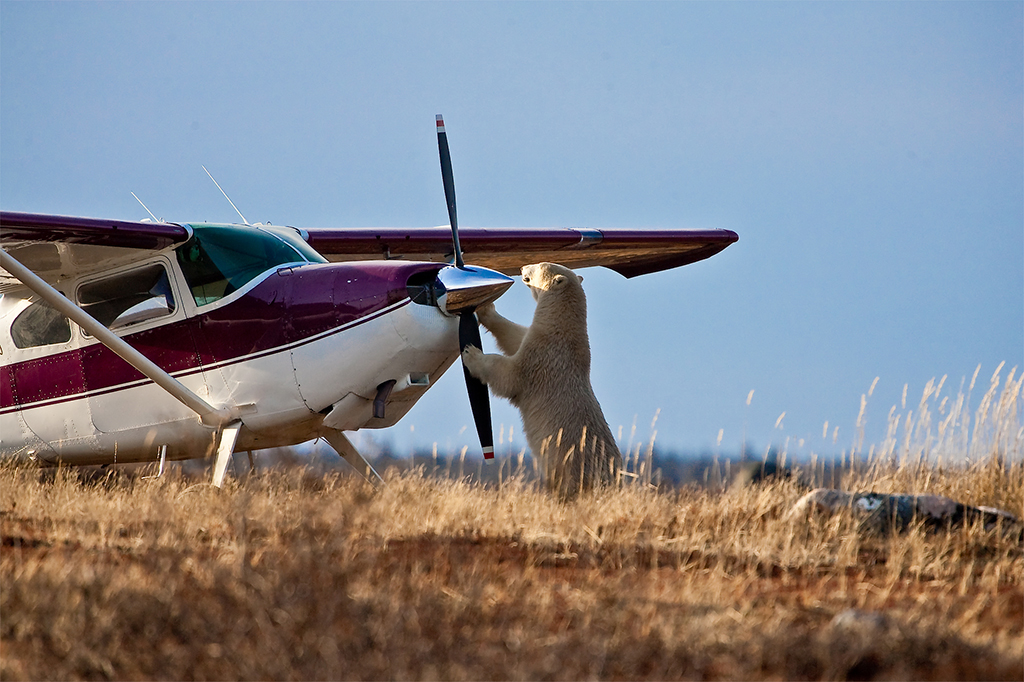







 Get the famous weekly
Get the famous weekly 






This might be a noob question, and sorry if this is actually answered in the article, but what do acronyms like RFF5 and RFF6 mean in this context?
Good question! RFF stands for Rescue and Fire Fighting category – it indicates the level of firefighting and rescue capability at the airport. The number (like RFF5 or RFF6) refers to the size and type of aircraft the airport is equipped to handle in case of an emergency. Higher numbers mean larger aircraft and more firefighting resources.
Don’t forget Prince George, smack dab in the middle of British Columbia right at 54N. 2 main runways, 5,500 and 11.500 served with approaches to all ends. While most airports in BC are in mountainous terrain, Prince George is in a relatively open area with relatively unconstrained arrivals unlike Terrace for example. As pointed out earlier there is lots of good winter maintenance and the “limited” comments at main airports are normally related to limited hours as opposed to limited winter maintenance.
Another good ones! Thanks.
Not bad but a few edits:
CYFB:
Wxx is usually good if the wind is from the north, and not good if the wind is from the south, especially with a wind over open water. The shoulder seasons are the worst, but summer and winter are usually fine.
Not sure why you say “limited winter mtce”. Out of necessity, because it is a fly in community (like many in the North) with no other access to the south, winter mtce is excellent. I would stack up the runway maintainers of any northern airport against any of the “big, southern” airports any day.
CYVP:
The large animals mentioned are most likely Caribou.
See the comment above (CYFB) about winter mtce. The only “limited” comment is in the CFS and it is operating hours, as they don’t work 24/7 but all arctic airports will come clean the runway at any hour if you call them with enough time, 3 hours prior notice in the case of CYVP. You also might have to pay for the overtime.
CYRT:
Winds can be problematic in YRT, usually strong, gusty crosswinds.
“…given the remoteness of the region you can probably assume limited ground support and harsh winter conditions.” They have daily 737 service, so ground servicing should not be an issue for anything smaller than an A380 or B747., and the harsh winter conditions are only in the winter. You think I’m joking but many who don’t live or have previously visited the North think it is all snow and ice all the time.
CYEV:
The “limited grading areas” means there is not much “shoulder” next to the runway, so…stay on the runway.
“…they built a runway and that was about it.” is not quite accurate. There is a good size ramp which supports daily 737 service and occasionally C-17 ops as well. A good source for info would be Aklak Air (local airline) and thier contact info is at http://www.aklakair.ca
CYZF:
again, the “limited winter mtce” thing, where really it is just limited op hours. Yellowknife is a major hub in the western Arctic. Daily 737 service means any and all ground support is available for most airliners.
Hi Jeff,
Thanks for taking the time to send this! I did not realise the limited winter maintenance was due operating hours. Now you’ve pointed that out it seems rather obvious given these are airports used to winter conditions…
All updated and the info is very useful – hopefully others find it so too.
(Some of the comments are meant a little tongue in cheek, but I have toned them down as appreciate how that might have come across).
What a good summary! As usual great job Becs!
Thanks John. I can’t actually take credit for this, the info was provided by a member. I just padded it out with some amusing polar bear pictures.